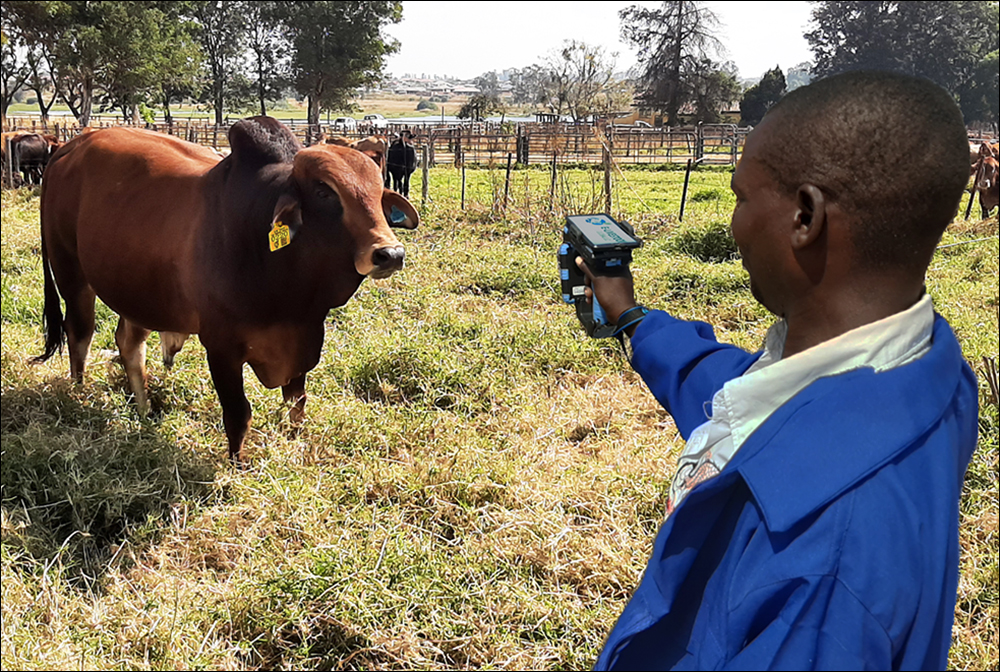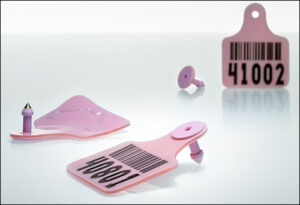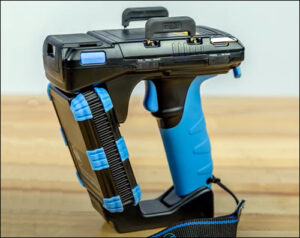Thousands of cattle in Zimbabwe are being tracked via a blockchain platform, with data captured from UHF RFID tags as cows move through such processes as vaccinations or treatment for disease. Farmers, beef buyers, veterinarians and other cattle professionals are employing the collected data to ensure the good health of cattle as the animals are bought and sold. The animal-tracing system is being provided by E-Livestock Global, a Maryland technology company.
E-Livestock is providing the solution at low cost, as what it calls a “technology for good” effort, enabling every cow to be managed digitally. In that way, the company explains, large and small farmers can better access and share information regarding the animals they raise, sell or purchase. The data can be used to track not only each animal’s health, but also its collateralization status (such as whether there is a lien on a particular cow). Payments conglomerate MasterCard is the blockchain provenance solution provider.

E-Livestock built the system for all sizes of farms worldwide, starting on the African continent, in order to provide affordable visibility and traceability for each animal, according to Chris Light, the company’s CEO. Light has worked in worldwide international development efforts in the past, through the U.S. Agency for International Development (USAID), and has served as an information technology advisor for the Presidential Initiative to End Hunger in Africa.
With the E-Livestock solution, Light aims to benefit Zimbabwe’s cattle industry now, while he has conversations underway in a half dozen other countries in Africa and beyond to expand the technology to those other areas. In the long term, he plans to make the solution available worldwide. In Zimbabwe, the data from RFID tag reads is intended to improve cattle health, reduce rustling risks and enable the county’s farmers to sell beef or cattle overseas. The country is a major producer of beef cattle, with a total population of six million cows.

Avery Dennison’s Eartrace tag
In 2018, an outbreak of tick-borne disease killed 50,000 cattle and forced the nation to shut down all beef export. That loss has been an economic blow for Zimbabwe, which has been striving to establish itself as an exporter of beef ever since. To prevent such diseases, cattle often undergo a dipping of insecticide, as well as receiving vaccinations and medical treatments as needed. The E-Livestock solution is intended to create a shareable record of when such treatments take place for each cow, along with other health records and any loans or liens on any given animal.
E-Livestock built its blockchain-based solution to be accessible at a cost of $2 per cow, Light says—the approximate cost farmers incurred when buying standard printed ID tags for their cattle, which are now required by law. The company’s goal, he says, is to enable “traceability of animals to measure treatments over time and create a transparency into the business that can be viewed through the cloud,” at a cost not exceeding that of standard ID tags.
Each UHF RFID tag is printed with a QR code and a numeric ID, then is attached to a cow’s ear. The ID number follows a global ID standard for cattle that enables users to view such information as where each cow originated. Typically, when a tag is applied to an animal, its ID number is interrogated using a CS108 reader from Convergence Systems Ltd. (CSL). That creates the beginning point of the blockchain history for that cow in the cloud. From that point forward, farmers and tick-control dipping officers can read tag IDs and update the status of each animal related to the procedures they undergo. That can include the dipping, as well as any other medical treatment.
The blockchain software stores data related to each event. Farmers and those buying their cows can access an immutable record of each animal’s health and healthcare, as well as other relevant information. Farmers have the choice to record events on the blockchain, or to simply capture data for their own purposes. For instance, when counting cows, the system could store the collected data locally. However, regular health checkups and treatments, or a disease outbreak involving a visiting veterinarian, can be recorded and shared via the blockchain. Since rural areas often have connectivity issues, the readers can store the information until they come within range of a network.

CSL’s CS108 reader
E-Livestock works with Avery Dennison, leveraging its Eartrace UHF hard tags. CSL is experimenting with the tags in the United States as well. The standard ID nomenclature consists of the first three digits representing the country code, followed by additional numbers representing the district code, and then the animal’s unique ID. All of that data is accessible in the dashboard provided by MasterCard. “What’s nice about the dashboard,” Light says, “is it’s a living document rather than a static report.” He adds, “If there’s an outbreak, the system will provide a history of the health events and treatment locations for each animal.”
E-Livestock has been piloting the system for the past year, with UHF RFID tags monitoring 10,000 heads of cattle. The tags have provided a long read range compared to the shorter range of standard LF or HF RFID tags, Light reports, which means they can be read from a distance that makes inventory counting or cattle identification easier. In some cases, farm workers can simply drive a truck near cattle to read their tags. The system also helps to thwart rustling, he notes, since an ear tag provides each animal’s history, and it eliminates the need for branding—a practice still in place for some third-world farmers.
With regard to the CSL reader, Light says, “We chose this reader because it’s a ruggedized piece of equipment. That’s what you need with cattle.” The device is designed for this kind of application, according to Rod Saunders, the business-development manager of Intrasonic Technology (1ST-RFID), a CSL distributor that operates out of Dallas, Texas. “This is one of the places were the CS108 shines.”

Chris Light
In Zimbabwe, the tags do not require an RFID reader for farmers who lack the technology. Users can also access the data via QR codes, by scanning the tag with a smartphone, and those who don’t have a smartphone can input the printed ID number to read the data in the blockchain. The information is available not only to farmers and supply chain members, but also to the government. “The system is designed for everybody,” Light says, “from large farms to the guy with three cattle.”
Beyond thwarting rustling and monitoring health status, the technology is aimed at bringing visibility to collateralization. That means a smart contract can be set up in the blockchain, including such information as whether there may be a lien on a particular cow, along with insurance for the animal. Overall, Light says, the cattle industry offers a wide opportunity for such technology. There are about 250 million cattle in Africa and 90 million in the United States, Light adds, and he envisions the technology expanding across many of these animals.

Rod Saunders
Cattle are not the only animals that could be tagged and traced through the blockchain, however,. The Zimbabwe Parks and Wildlife Management Authority is requesting the technology’s use for some wildlife, such as elephants that share pasture space with the cattle. Tracking the locations of elephants, for safety purposes and for the animals’ protection, is traditionally satellite-based and highly expensive, Light explains. RFID tags offer a lower-cost alternative.
While a UHF tag cannot follow an animal as it roams freely, Saunders says, in the case of cattle such a tag is readable from a distance of 5 to 20 meters (16.4 to 65.6 feet), depending on the tag and the environment. Thus, he explains, reading tags on wildlife within a cattle area may provide useful data. Ear tags can be well read, in part, because they are separated from the rest of the body, and because animals’ ears often move, providing adjustment of transmission orientation.
The technology is next expected to be rolled out in Mozambique, and it will also be made available for use with other livestock, including sheep, pigs and goats. The Zimbabwe deployment represents an early rollout to support a country in which farmers were struggling, Light says. “They had a humanitarian need,” he states. “This is intended to provide technology for good.”


